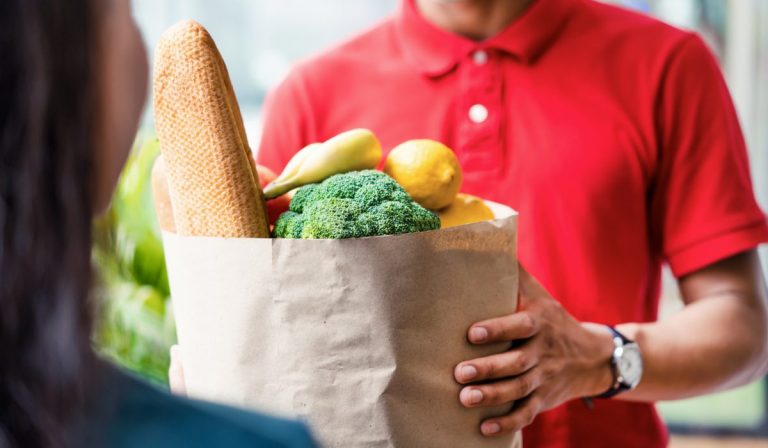Online grocery is no longer just the purview of brick-and-mortar incumbents and emerging eCommerce startups. Major technology companies are also making moves into the space.
Apple, for one, is said to be looking into launching its own grocery delivery ordering service to rival Instacart, although Apple’s would have more of a focus on nutrition, according to an Apple Insider report Sunday (May 8).
Read more: Apple Said to Eye Grocery Delivery for Apple Pay
Apple is not the only major technology company looking to establish itself in the space. Grocery can be a valuable category for any company looking to embed its offerings deeper into consumers’ daily routines. After all, people need food every day, and many purchase groceries several times a week, ensuring regular engagement. As such, the category is proving to be a battleground for many players.
Google, for its part, has also been integrating its offerings into the grocery shopping experience. For instance, it is integrating grocery purchasing and order-tracking features into its navigation app. Additionally, in March 2021, the company announced a partnership with Albertsons Companies to integrate its cloud technologies into the grocer’s digital platforms.
See more: Google Maps Expands eGrocery Discovery Features
Advertisement: Scroll to Continue
Amazon has also been expanding its grocery offerings, opening new brick-and-mortar stores in addition to running online delivery services both through its name-brand stores and through its Whole Foods Market brand. However, so far, Amazon has struggled to make a dent in its retail rival Walmart’s lead on the category, with the latter continuing to outpace the tech giant 10-to-one in food and beverage categories, according to research from PYMNTS’ April report “Amazon Versus Walmart Q4 2021: The Ongoing Battle for Consumer Retail Spend.”
The study, which drew from the quarterly earnings reports of both tech giants and from consumer spending data, found that the average U.S. household still spends roughly 10 times as much on food and beverages at Walmart than at Amazon. Specifically, last year, Walmart brought in $264 billion in food and beverage sales, while Amazon’s total amounted to $27 billion.
Read more: US Consumers Spend 10x More on Groceries at Walmart Than Amazon
A relatively small but growing share of consumers purchase groceries online. Research from PYMNTS’ January study “Decoding Customer Affinity: The Customer Loyalty to Merchants Survey 2022,” created in collaboration with Toshiba Global Commerce Solutions, found that 18% of grocery shoppers purchase digitally more often than in stores.
See more: 35% of Consumers Will Switch Grocers, Pharmacies for Better Digital Features
That figure is far from fixed. There is significant variation in consumers’ adoption of online grocery channels even month to month. For instance, findings from PYMNTS’ April study, “ConnectedEconomy™ Monthly Report: 3 Ways Consumers Are Dealing With Inflation,” found that 31.6% of consumers reported ordering groceries online in March, up 4.9% from just the month before.
Read more: Online Grocery Adoption Rises 5% in March, PYMNTS Data Reveal




